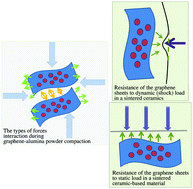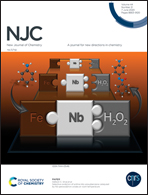Effect of graphene sheet incorporation on the physicochemical properties of nano-alumina
Abstract
The colloidal processing method was suggested for obtaining chemically homogeneous composite powder based on graphene and nano-alumina. The technique allows integrating a hybrid structure by mixing components at the nanoscale owing to the use of exfoliated oxygen-free graphene sheets and as-prepared Al-containing sol. This method leads to the production of super finely dispersed alumina in the composite and prevention of graphene agglomeration in the bulk material. It turned out that the graphene sheets partially protect the alumina crystallites from deformation and phase transition in the temperature region of 1130 °C, which is critical for pure nano-alumina. The content of graphene sheets, even less than 2 wt%, leads to a decrease in compressibility of the composite compared to pure alumina. The elasticity of the obtained sintered material increased, which makes it promising for the development of fine-grained ceramics with improved mechanical properties, such as hardness, impact strength, and fracture strength. The achieved improvements in the structure and features of the graphene–alumina composite, as well as dilatometry properties, are of high demand in the production of medical materials with high biocompatibility, sensors, materials with low electrical resistance, catalysts, adsorbents, Li-battery electrodes and facilitated high impact materials.



 Please wait while we load your content...
Please wait while we load your content...